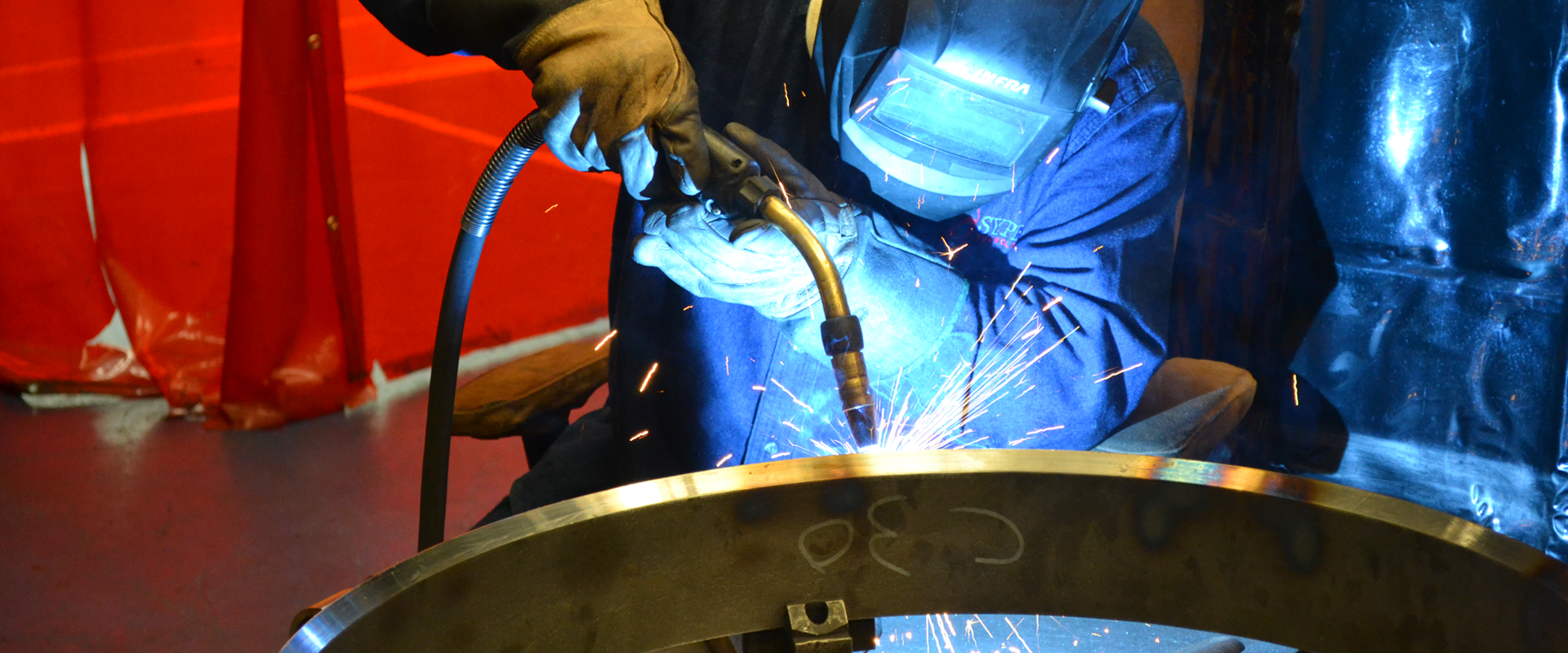
Welding Capabilities
Engineered Welding for Structurally Critical Components
Welding Capabilities at Sypris Technologies
Sypris Technologies delivers highly engineered welding solutions for structurally critical and load-bearing components across the transportation, energy, defense, and industrial markets. Our welding operations are built around process repeatability, certified procedures, and strict quality assurance protocols to meet or exceed customer and industry specifications.
Whether manual or automated, our welding systems are optimized for metallurgical compatibility, joint integrity, and dimensional precision, supporting both prototype development and high-volume production.
Certified Welding Processes
We offer a full portfolio of fusion and resistance welding processes qualified to AWS, ASME, and customer-specific standards. Welding procedures are developed and qualified in-house, with ongoing operator certifications and continuous training.
Core processes include:
- GMAW (Gas Metal Arc Welding / MIG): High-deposition welding for structural steel and alloy components
- GTAW (Gas Tungsten Arc Welding / TIG): Precision welding for thin-walled or specialty alloys requiring low heat input
- FCAW (Flux Cored Arc Welding): High-strength, high-productivity welding with deep penetration characteristics
- SMAW (Shielded Metal Arc Welding): Field-flexible process used for maintenance and low-volume applications
- SAW (Submerged Arc Welding): Deep weld penetration and excellent mechanical properties for heavy-section components
- Resistance Welding: Spot and projection welding for high-speed joining of sheet metal and lightweight subassemblies
- Orbital Welding: Controlled, repeatable welds on circular cross-sections; ideal for tube and pipe applications requiring high purity and consistency
All welding procedures are qualified per customer and application-specific requirements, including destructive and nondestructive testing validation.
Welding Infrastructure & Equipment
Sypris employs advanced welding workstations, robotic cells, and custom fixturing systems to ensure repeatability, efficiency, and tight process control.
Capabilities include:
- Multi-axis robotic welding cells with adaptive seam tracking
- CNC-controlled welders with programmable arc parameters
- Precision fixturing for distortion control and positional accuracy
- In-process welding gauges and post-weld inspection stations
- Automated part rotation and clamping systems for large weldments
Materials & Applications
We weld a broad range of ferrous alloys including carbon steel, low-alloy steel, and selected high-strength steels, many of which are post-weld heat treated for enhanced mechanical properties. Applications focus on high-load and fatigue-sensitive assemblies.
Common welded components include:
- Axle and suspension assemblies
- Powertrain brackets and structural subframes
- Torque arms, crossmembers, and trailer components
- Defense-grade structural weldments and support arms
- Oilfield and industrial equipment frames
All welded assemblies are designed and validated to meet load case expectations, including torsion, bending, and impact requirements.
Quality & Inspection
Our welding quality system is embedded into every step of the process and supports critical applications across regulated industries. We deploy a combination of in-line and post-weld inspection technologies.
Quality protocols include:
- Weld Procedure Specification (WPS) and Procedure Qualification Records (PQR)
- Certified weld inspectors (CWIs) per AWS D1.1 and D1.2
- Visual inspection (VT), magnetic particle inspection (MT), and ultrasonic testing (UT)
- Weld profile and penetration validation
- Process audits and weld traceability systems
All welding operations are integrated within our IATF 16949, AS9100D, and ISO 9001:2015 certified quality system.
Competitive Advantages
- Vertically Integrated Manufacturing: In-house forging, machining, heat treating, and welding enables total process control
- Custom Tooling & Fixture Design: Ensures precision fit-up and distortion mitigation
- Lean & Six Sigma Principles: Applied to drive down defects, cycle time, and rework costs
- Engineering Collaboration: Support for weld joint design, FEA review, and process optimization during product development
Key Benefits
- ASME and AWS certified processes
- Multiple welding technologies available
- Experienced welding engineers and technicians
- Comprehensive quality inspection
- Material traceability and documentation
Request Information
Interested in learning more about our welding capabilities or discussing your specific requirements?
Contact Our Team
Related Capabilities
Discuss Your Welding Requirements
Our welding engineers and specialists can help you select the optimal joining process for your specific application.
Contact Our Team